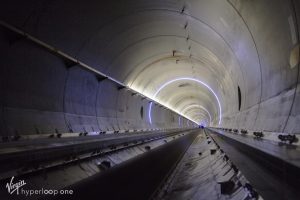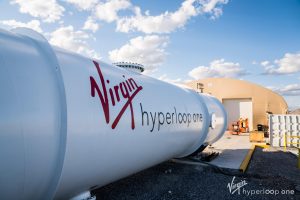How Elon Musk’s high-speed transport, the Hyperloop has been transformed from dream into almost reality
Video credit: www.theb1m.com / https://www.youtube.com/watch?v=zcikLQZI5wQ
Back in 2012, Elon Musk addressed a crowd with his idea for a super-speed mode of transport which he coined the ‘Hyperloop’.
Musk described the Hyperloop as a mode of transport which sees pods filled with people, shoot through vaccum tubes at 1,000 kilometers per hour.

However, Musk decided not to pursue the idea himself and has since made the idea open to anyone who is interested in developing the concept.
Fast forward six years and we have two companies — Hyperloop Transportation Technologies and Richard Branson’s Virgin Hyperloop One — who believe they are on the verge of putting the idea into fruition and revolutionising the transport industry for good.
The companies have recently revealed partnerships with plans to open the system to the public in the next three years.
More recently, Virgin Hyperloop One has signed an agreement with the Administrator of Railway Infrastructures to open an Advanced Technology Development and Testing Center in the Andalusian region of Spain, the company’s first European development facility, valued at approximately $500 million.
In return, Virgin Hyperloop One would receive €126 million in public aid through loans and grants to establish the new center in order to advance Virgin Hyperloop One’s technology development and testing, whilst stimulating regional economic growth and job creation.
Rob Lloyd, Virgin Hyperloop One CEO said: “With its robust transportation, aerospace, and high-tech sectors in turn paired with outstanding regional talent, Spain is an ideal fit for Virgin Hyperloop One’s Advanced Technology Development and Testing Center.

“By investing in the development and testing of Virgin Hyperloop One, Spain is extending its long-tradition as an innovative, global transport leader. We are excited to partner with such a forward-thinking country in developing the next generation of transportation.”
The past year has seen some impressive agreements for Hyperloop Transportation Technologies, who confirmed in April that the first set of tubes to move both people and freight to their research and development center in Toulouse, France had arrived.
With an interior diameter of 4.0 meters, the tubes were optimized both for passenger capsules and shipping containers. This phase included a closed 320 meter system that would be operational later this year.
In addition, a second full-scale system of 1 km elevated by pylons at a height of 5.8 meters will be completed in 2019.
In July 2018, the company announced the signing of an agreement in the People’s Republic of China. The agreement was signed by both HyperloopTT and Tongren Transportation & Tourism Investment Group of the People’s Republic of China.
Dirk Ahlborn, CEO of Hyperloop Transportation Technologies said: “We envision that Hyperloop will play into a bigger role of the Silk Road Economic Belt, connecting the region to the rest of the world.”
“China spends over $300 billion annually on infrastructure to address their rapidly growing urban populations. Having worked alongside our government partners, Hyperloop has proven a viable solution for this immediate problem.”
This is the first Hyperloop agreement with China and marks the twelfth agreement for the company and their third commercial agreement following announcements in Abu Dhabi and Ukraine earlier in 2018.




![[VIDEO] HS2 completes 4,600-tonne viaduct slide across M6 The HS2 team completed a 17-hour long operation sliding the viaduct structure across the M6 without closing the motorway](https://www.pbctoday.co.uk/news/wp-content/uploads/2025/12/M6-South-viaduct-slide-taking-place-across-a-live-motorway-December-2025-218x150.jpg)








